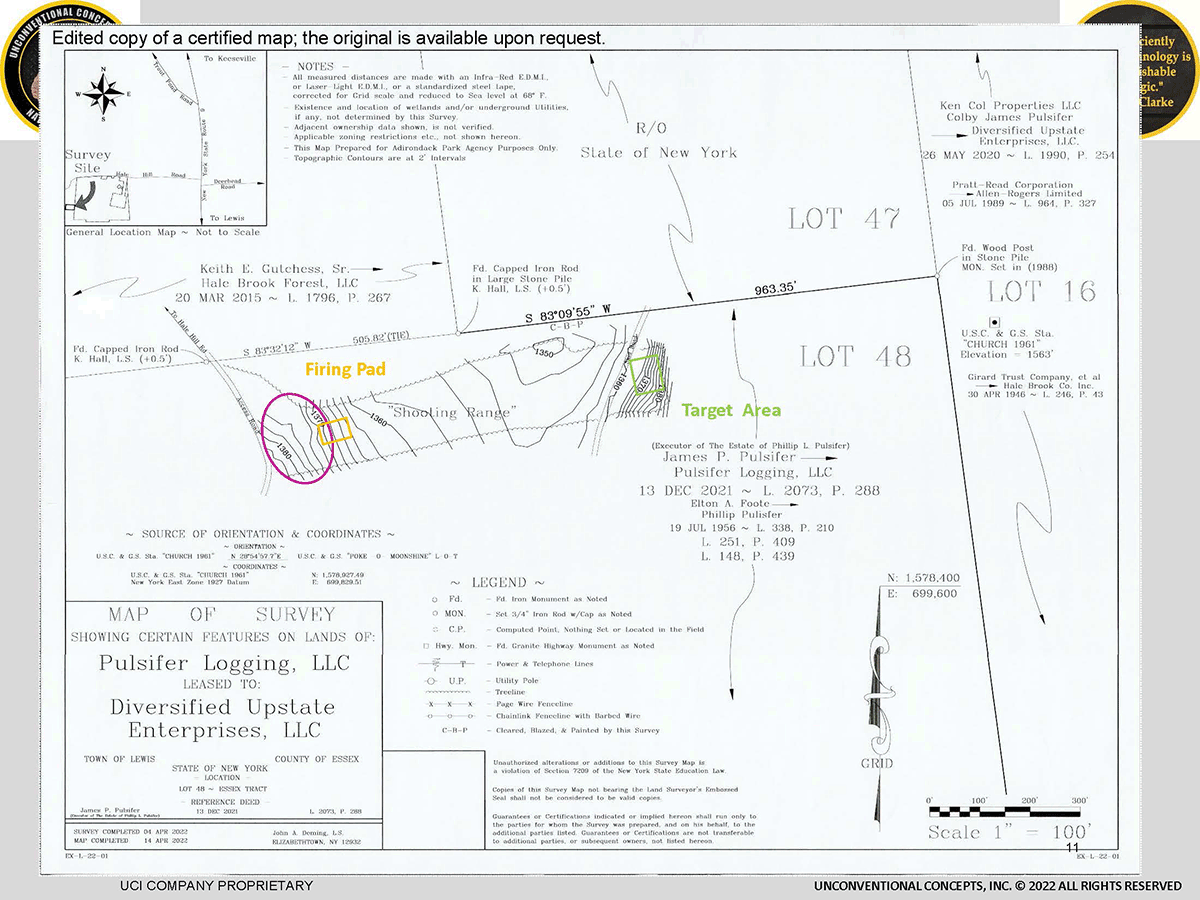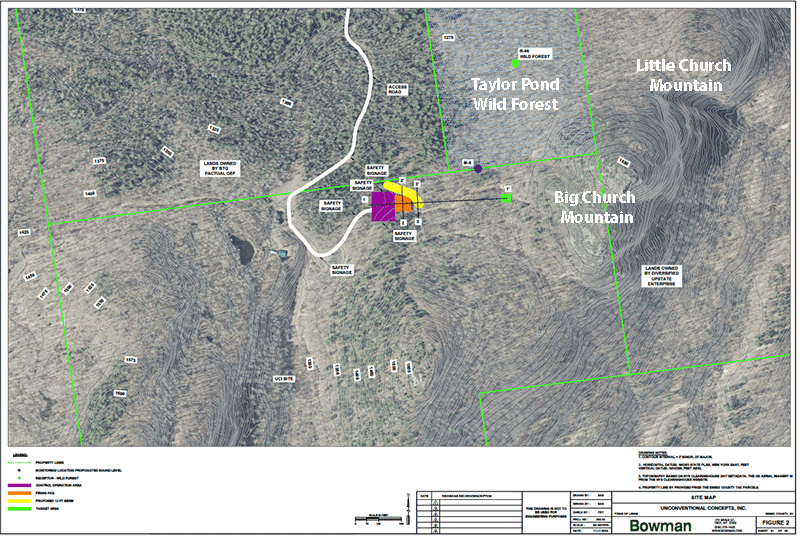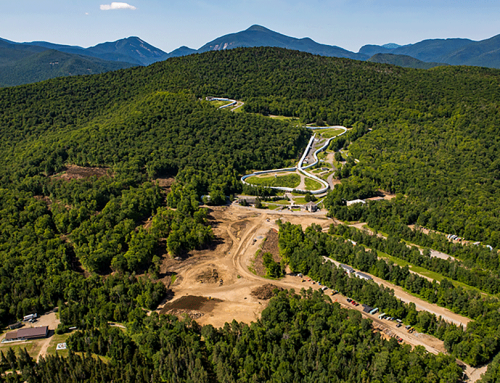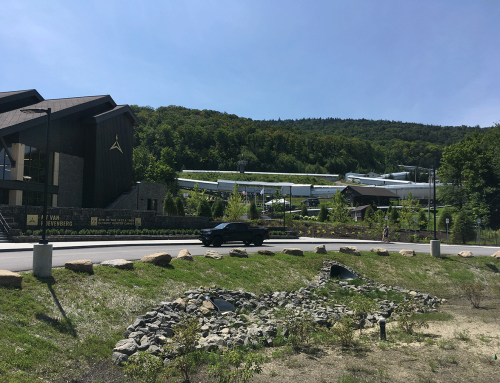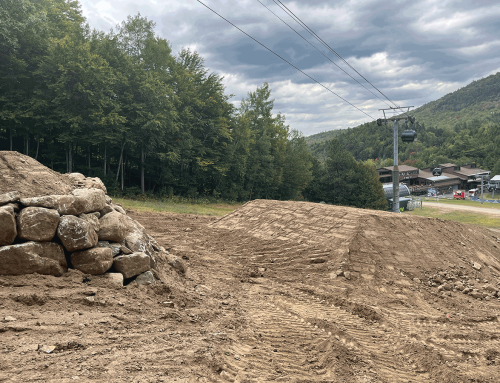APA Board to vote at its meeting November 13-14, 2025
Overwhelming public comments raised concerns about the weapons firing range; if draft APA Order proposed by staff is passed by the Board, it will be the first time since 2007 that an adjudicatory hearing is ordered
APA Staff Presents Draft Order to Require Formal Adjudicatory Public Hearing for Weapons Firing Range
In a draft Order released on the Adirondack Park Agency’s (APA) website, APA staff recommend that the APA Board hold a formal adjudicatory public hearing for a proposal to operate a weapons firing range. APA received over 1,400 public comments and all but 19 of those comments expressed concerns about the proposal. The APA Board must now decide on November 13,-14 whether to approve and issue the draft order sending this proposal to an adjudicatory hearing.
Weapons Firing Range Proposal
An application by Unconventional Concepts, Inc. (UCI) was submitted to the Adirondack Park Agency (APA) seeking approval to construct and operate a weapons ballistic firing range on a 197-acre parcel of land in the Town of Lewis (Essex County) classified as Rural Use on the Adirondack Park Land Use and Development Plan Map.
The proposed project involves the firing of a 155mm howitzer cannon—characterized by the Norwegian defense agency as “one of the noisiest weapons” in the Norwegian arsenal—up to 30 times per year over a five-year period. UCI proposes to fire this acoustically intrusive artillery in close proximity to scores of private residences, within 350 feet of the Taylor Pond Wild Forest, and in close proximity to the Jay Mountain Wilderness, and the Hurricane Mountain Wilderness. Incredibly, UCI proposes that Big Church Mountain be used as a “backstop” to capture artillery shells fired by the howitzer.
As proposed, a portable 155mm howitzer will be fired from a 100-foot by 100-foot crushed gravel pad, sending steel projectiles into a target area. The firing range will be longer than three football fields (330 yards). The howitzer will be fired up to 30 times per year on weekdays between the hours of 10 a.m. and 4 p.m. There may be as many as 10 hours of firings in a single week, and the testing is anticipated to continue for five years.
The project site is forested, includes streams and wetlands, and includes Little Church and Big Church mountains. The application states (p. 24) that the site has been chosen “because it provides easy access to mountains, which will act as a projectile backstop,” and that “[t]he current intent is that test shots will impact the mountain at the end of the range.”
There are 42 residences located within two miles of the project site. The site is also located in close proximity to sensitive Forest Preserve lands, including the Jay Mountain Wilderness Area (approximately 2.5 miles away), and the Hurricane Mountain Wilderness Area (approximately 4 miles away). The project site is also within two miles of four parcels of the Taylor Pond Wild Forest, with the closest parcel located approximately 350 feet from the proposed artillery firing pad.
Weapons Firing Range Has No Place in the Adirondack Park
A military weapons testing range has no place in the Adirondack Park. The application must be denied. The proposed project is directly at odds with the purpose of the Adirondack Park and is also inconsistent with the statutory purposes and policies applicable to Rural Use areas.
The siting of a military artillery testing range is, on its face, inconsistent with the character of the Adirondack Park, which “is abundant in natural resources and open space unique to New York and the eastern United States.” Executive Law § 801. The proposed project is utterly out of character with “[t]he wild forest, water, wildlife and aesthetic resources of the park and its open space character.” Executive Law § 801. Furthermore, an artillery testing range does not “complement[] the forest preserve holdings” or provide “supporting facilities necessary to the proper use and enjoyment of the unique wild forest atmosphere of the park.” Executive Law § 801. Indeed, it is difficult to imagine a use more directly at odds with the Adirondack Park’s wild forest atmosphere.
The inappropriateness of locating the proposed project within Park boundaries is underscored by the fact that a military artillery testing range is not listed as either a primary or secondary compatible use for Rural Use (or for any land classification). See Executive Law § 805(3)(f)(4).
The proposed project is therefore a presumptively incompatible use for Rural Use areas. Id. § 805(3)(a).
Although the proposed project is styled as a “commercial use,” which are listed as a secondary compatible use in Rural Use areas, it is far from a typical commercial use because it does not involve the sale or rental of goods, services or commodities and will not provide recreation facilities or activities. See Executive Law § 802(17) (defining “commercial use” as “any use involving the sale or rental or distribution of goods, services or commodities, either retail or wholesale, or the provision of recreation facilities or activities for a fee other than any such uses specifically listed on any of the classification of compatible uses lists.”). Therefore, the proposed project is not compatible with a Rural Use area.
In any event, the incompatibility of the proposed project with the Rural Use classification is made clear by the APA Act. A Rural Use area is one “where natural resource limitations and public considerations necessitate fairly stringent development constraints . . . [and is] characterize[d] by substantial acreages of one or more of the following: fairly shallow soils, relatively severe slopes, significant ecotones, critical wildlife habitats, proximity to scenic vistas or key public lands.” Executive Law § 805(3)(f)(1). In addition, Rural Use areas “are characterized by a low level of development and variety of rural uses that are generally compatible with the protection of the relatively intolerant natural resources and the preservation of open space . . [and] provide the essential open space atmosphere that characterizes the park.” Executive Law § 805(3)(f)(1). A military testing range involving the booming discharge of artillery shells into the side of a mountain will not protect natural resources and will destroy the open space atmosphere that is “essential and basic to the unique character of” the Adirondack Park. Executive Law § 805(3)(f)(2).
UCI’s Noise Analysis is Flawed and Demonstrates Unacceptable Impacts
The noise analysis submitted by UCI with the application purports to characterize the noise impacts from the proposed firing range. However, the noise analysis is deeply flawed because it is based on inadequate ambient noise monitoring. Ambient noise monitoring was conducted for only two days under atypical conditions and at locations influenced by nearby industrial, highway and snowmobile noise—thereby understating the true impacts. Collecting ambient noise data from areas more representative of the relatively quiet environment in that area would demonstrate that the noise from a howitzer firing will be highly intrusive. Thus, UCI’s noise analysis underestimates the project’s noise impacts and its conclusion that those impacts will not be significant is based on cherry-picked, unrepresentative ambient conditions.
UCI’s noise analysis also inexplicably fails to assess the noise impacts to either the Jay Mountain Wilderness Area, which is approximately 2.5 miles from the firing range, or the Hurricane Mountain Wilderness Area, which is approximately 4 miles away.
The noise impacts from the proposal will be significant and severe, and require denial of the proposal. Setting aside the significant errors and deficiencies of the noise analysis, it shows that the noise from firing the 150mm howitzer will be 180.8 decibels (dB) at the source. This is well above the 130 dB level that NYS Department of Environmental Conservation (DEC) characterizes as “painfully loud.” The increase in the noise levels above the skewed ambient levels reported by UCI are in the range of 22.5 to 25 dB, an increase in noise that DEC characterizes as “very objectionable to intolerable”.
Application for the Weapons Firing Range Was Deficient and Inaccurate
The application submitted by UCI contains serious deficiencies because it lacks essential information regarding the site’s natural resources and project impacts. Specifically, the application does not contain a comprehensive natural resource inventory, a survey of forest cover, a survey of vernal pools on the site, or an assessment of impacts on Wilderness areas. In addition, UCI failed to provide information requested by APA staff, including:
• A revised noise source level at or in proximity to the howitzer muzzle noise source (not 820 feet away);
• Empirical sound pressure level calculations for each of the receptor locations and an impact assessment utilizing those calculations;
• A revised noise impact analysis that includes varying wind direction and speed and atmospheric inversions; and
• The maximum charge proposed to be used for the artillery testing.
Without this information, APA cannot conduct the comprehensive review mandated by law.
Additionally, UCI misrepresents the economic benefits of the project, claiming that it will result in “hiring of personnel with advanced technical and research backgrounds” who will “contribute to the local and regional economy.” But this claim is at odds with UCI’s statement that operations at the site will be limited to 30 hours per year, and that the project will create no construction jobs and no full-time or part-time seasonal or year-round employment. Thus, there appear to be no economic benefits from this project.
Moreover, while UCI has claimed that this proposed project is critical for military preparedness and national security, there is no evidence to support such a claim, and the applicant has stated in a letter dated November 6, 2025 that this should be reviewed as “a request to use firearms in the park”.
APA Staff Proposes Order for Formal Adjudicatory Public Hearing
In releasing the draft Order, APA staff recommend that the APA Board hold a formal adjudicatory public hearing for a proposal to operate a weapons firing range. The draft Order contains Findings outlining the regulatory criteria that are met for holding an adjudicatory hearing, including the following findings specific to this proposal:
- The proposed activity is unique – the Agency has not permitted a howitzer testing range facility, nor is it aware of any existing facility of this type in the Adirondack Park.
- The level of public interest in this project is evidenced by the receipt of over 1,400 comments, the level of media coverage, and the scope of issues raised. Of the over 1,400 comments received, 19 comments expressed support for the project; the remaining raised concerns. Approximately 15 of the 44 residences within two miles of the howitzer testing range submitted comments.
- The proposed howitzer testing range requires more information to determine whether it can meet Agency approval criteria set forth in APA Act § 809(10)(a) and (b) concerning the land use and development plan and the compatibility of the project with the character and purposes of land classified as Rural Use and APA Act § 809(10)(e) concerning the development considerations in APA Act § 805(4) and 9 NYCRR 574.5.
- Based on the current information available, the Agency is unaware of any modifications or substantial conditions the Agency could impose that would address the potential impacts outlined above.
- The howitzer testing range raises unique issues and has the potential to affect the natural, scenic, ecological, wildlife, recreational, and open space resources of the park, including but not limited to: potential discharges, residues, or other pollutants that may affect water, air and land resources; noise impacts produced by the howitzer testing range; unknown disruption to native and migrating wildlife and their habitats at or near the proposed project site considering species’ sensitivities; and the impacts to adjoining and nearby land uses, including but not limited to effects on the residents of the Town of Lewis, impact to property values in the area, the community character and quality of life of the residents of the Town of Lewis, and health and safety impacts relating to the howitzer testing range, and the operation, storage and transport of military equipment outside of a designated military-controlled area.
- The hearing contemplated in this Order may be the only hearing at which the unique issues identified above may be publicly considered.
Draft APA Order pages 3-6.
We support the issues in the draft Order that have been presented by APA staff for an adjudicatory hearing. The draft Order states that three issues need to be considered at the hearing, summarized as follows:
- Whether the proposed howitzer firing range is compatible with the Adirondack Park;
- Whether the proposed howitzer firing range is a compatible use within the Rural Use land area classification; and
- Whether the proposed howitzer firing range would have an undue adverse impact upon the natural, scenic, ecological, wildlife, recreational or open space resources of the Adirondack Park.
We also believe that the APA Board should identify as an issue for adjudication the applicant’s claim that this project is essential for the national security of the United States. That will allow the Board to inquire further into UCI’s claims about the need for this project.
Holding an Adjudicatory Public Hearing is Necessary for Denial of the Project
If the APA Board approves the draft Order sending this proposed project to an adjudicatory hearing, it will be reversing its long-standing trend of not sending projects to a formal public hearing. In the first 40 years of the APA, the agency sent over 150 projects to formal adjudicatory public hearings, but there have been none ordered to a hearing since 2007. The last adjudicatory hearing was held in 2011.
The APA Board must exercise its authority to send this project to a public hearing given the incompatibility of this controversial project, the range of environmental impacts, the broad public opposition to it, and the application’s inaccurate, misleading and missing information.
APA can only deny a project if it has gone through an adjudicatory hearing. APA cannot deny a project like a local planning or zoning board can in New York State. APA’s only responsible course of action is to send this project to an official adjudicatory public hearing. This project should be denied, so APA must hold an adjudicatory hearing to comply with the APA Act’s procedural requirements.

